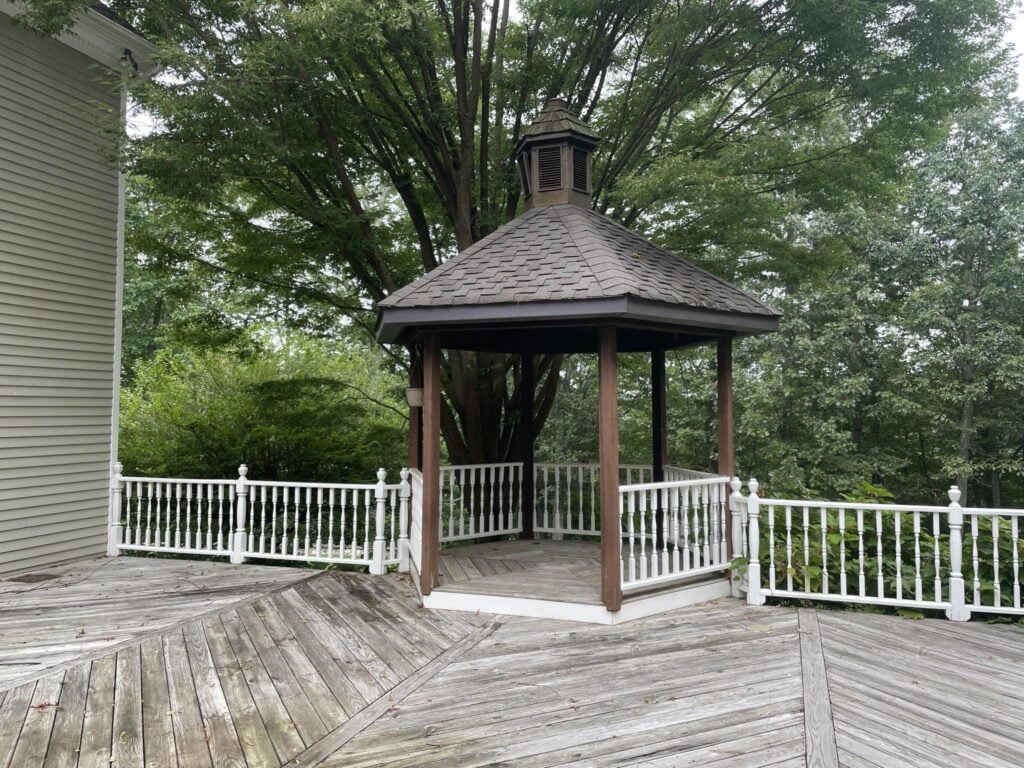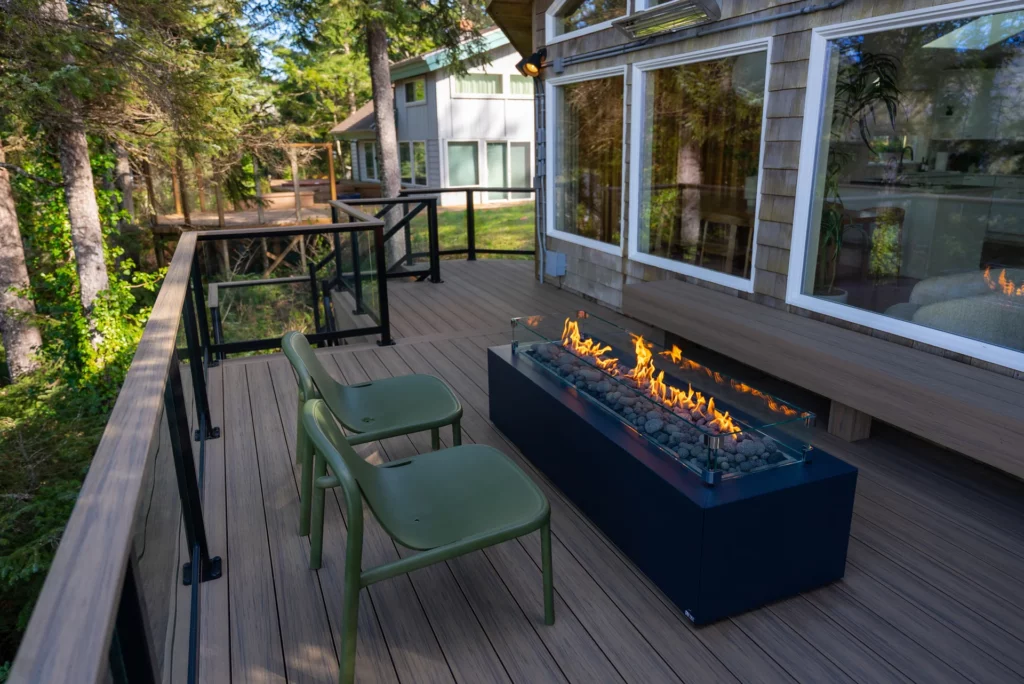I (Leif) was recently invited to a home whose multilevel cedar deck looked a lot like the photo above—grey, streaked with mildew and dotted with soft spots. The new owners plan to stay only about five years, so their big question was:
“Is it worth sanding and re-staining, or should we tear the boards off and install composite?”
Below is the same thought process I walked through on site. If your deck looks similar, this guide will help you decide which route—refinish or replace—delivers the best value (and peace of mind).
1. Start with Age and Overall Condition

The very first thing I ask is, “How old is the deck?” Cedar behaves pretty predictably:
If it’s under 10 years old
The boards are usually still structurally sound, with only surface graying. A deep clean, light sanding, and two coats of a high-quality oil-based stain every two to three years will keep it looking sharp.Between 10 and roughly 15 years old
You’ll start to see end-grain rot and the occasional split. At this stage it often makes sense to spot-replace the worst boards, then stain. If you’re itching for lower maintenance, a composite surface is worth pricing out.Older than 15 years
Frequent rot, loose fasteners, and soft spots are common. By the time you replace enough cedar to make it safe, you’re nearing the cost of a full composite resurfacing—and composite wipes future maintenance off the to-do list.
2. Zoom In on Trouble Spots

Take a flathead screwdriver and probe the ends of random boards—especially where seams meet framing or where water tends to pool. If the tip sinks in more than ¼”, the fibers are decaying. On this deck, roughly 20 % of the planks showed end-rot like the joint above. Replacing that many cedar boards plus labor can rival the price of new composite surface boards.
3. Add Up the True Cost of Staining
Between stripping, sanding, cleaning and two coats of top-shelf stain, most homeowners spend $4 – $6 per square foot every time they refinish. Do that twice in five years and you’ve invested almost as much as a budget composite board—without gaining the zero-maintenance benefit.
Pro tip: never skimp on stain quality. Cheap products fail fast and actually raise the total cost of ownership.
4. Why Composite Often Wins After Year 15

Modern composites from brands like Deckorators®, Trex® and TimberTech® resist rot, fading and splintering, and specifically Deckorators will carry 25 to 50 year warranties. Upfront, you’ll pay about 10–15 % more than cedar, but you eliminate repeated staining and gain a selling feature that real-estate agents love.
For this project, the homeowners only plan to stay five years. By resurfacing now, they’ll enjoy a worry-free deck and recover a large chunk of the investment at resale, because a clean, low-maintenance outdoor space does really well in photographs and shows well to buyers
5. Quick Decision Checklist
Count the soft boards. More than a handful? Lean toward composite.
Factor your timeframe. Staying < 10 years and deck < 10 years old? High-end stain may suffice.
Consider curb appeal. Composite boosts value and eliminates weekend maintenance.
Inspect the frame. Joists sound and properly flashed? You can often keep the sub-structure and just swap surface boards.
Call a pro for a free quote. A side-by-side cost comparison makes the choice clear.
